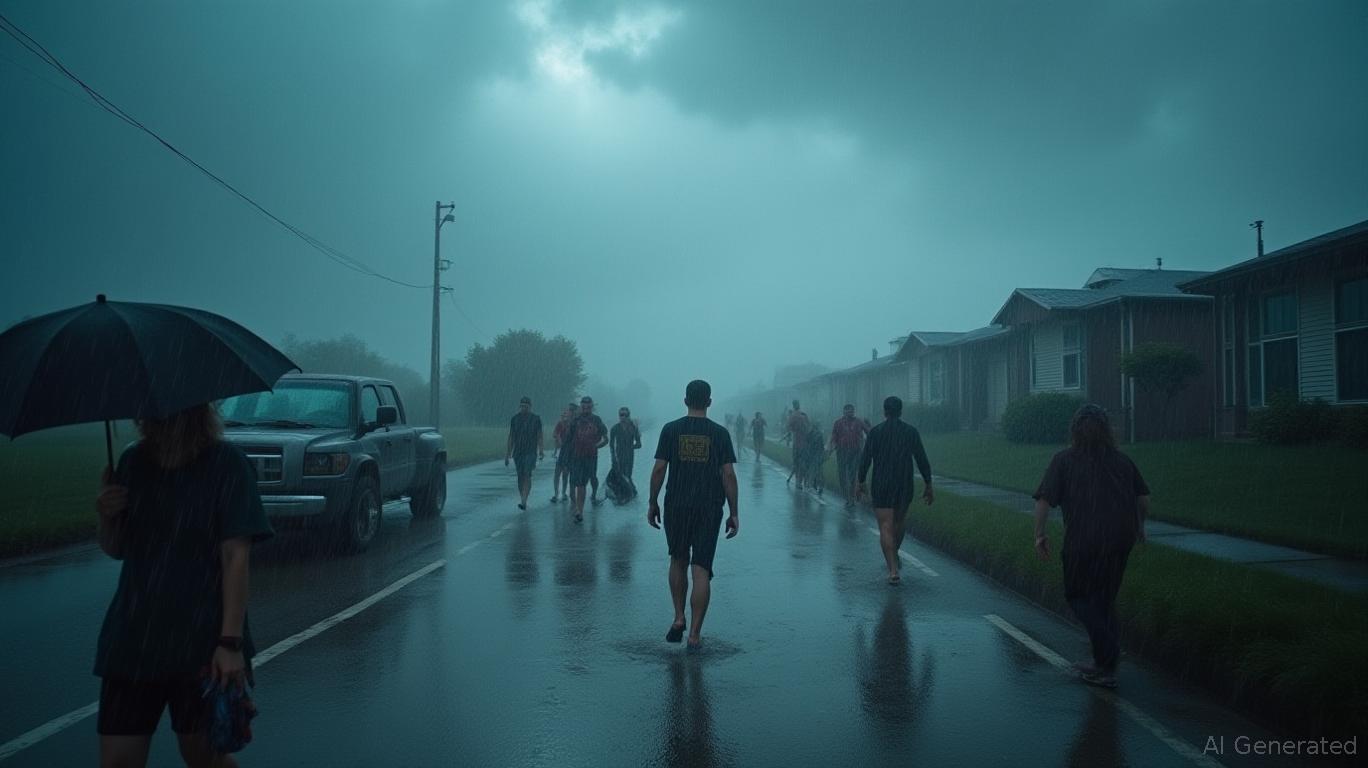AInvest Newsletter
Daily stocks & crypto headlines, free to your inbox
Torrential rainfall and thunderstorms are poised to sweep across parts of the Midwest, raising significant concerns over potential flash flooding in regions spanning from Missouri to West Virginia, including urban centers such as Indianapolis and Cincinnati. Meteorologists have previously lifted a flash flood warning for Des Moines, Iowa, following an early Sunday deluge, yet new threats loom over the area. Meanwhile, the flash flood emergency that previously affected northern Washington, D.C., now marks a memory in the unfolding weather saga.
Saturday's intense downpours left their mark across Maryland, submerging areas in Chevy Chase, Silver Spring, and Bethesda. At times, Maryland cities reported 1 to 2 inches of precipitation within a mere half-hour. Into Sunday, the threat of flash floods remains acute for Davenport, Iowa, stretching into northern Georgia. The forecast warns of continued hazardous conditions, particularly in northeast Missouri and central Illinois, where flash floods could strike overnight into the early hours of Monday. Late Sunday threats also reveal a potential for scattered severe thunderstorms that may impact segments of the Midwest and Northeast, increasing the region's vulnerability to adverse weather effects.
As the East Coast endures flood watches extending from Iowa to Georgia, the probability of rain is accentuated by already saturated grounds, which heightens the potential for flooding in regions extending into Virginia and northeastern North Carolina throughout Saturday night. Heavy storms on Saturday morning drowned sections of eastern Iowa, causing temporary inundation across these Midwestern expanses. Currently, flash flood warnings are underway for parts of southern Illinois, southern Indiana, and northern Kentucky as heavy rain from thunderstorms continues to inundate the region. Flood forecasts estimate between 2 to 4 inches of rain over the alerted areas, with a more acute risk marked as moderate in portions of western and central Kentucky, southern Indiana, and southeastern Illinois. Already, these regions have experienced excessive rainfall, with a prediction of additional downpours between 3 to 5 inches.
The high-pressure system identified over the Southeast ensures oppressive heat and humidity, but it equally fosters the potential for thunderstorms on its periphery, particularly across the Plains and the Midwest. This atmospheric configuration, unofficially termed a "ring of fire," propels the formation of severe storms along its outer boundaries. The resultant conditions produced damaging winds and the potential for large hail and tornadoes, afflicting not only the Midwest but extending into the East Coast. These meteorological developments heighten the probability of destructive weather across notable regions, requiring vigilance as adverse repercussions materialize.
As the Midwest and surrounding states brace for this ongoing cascade of severe weather, efforts remain focused on mitigating the risks associated with this dynamic system. Emergency responders and state authorities continue to monitor conditions closely, striving to ensure public safety amidst Mother Nature’s unpredictable narrative.

Stay ahead with real-time Wall Street scoops.
By continuing, I agree to the
Market Data Terms of Service and Privacy Statement
Daily stocks & crypto headlines, free to your inbox
Comments
No comments yet